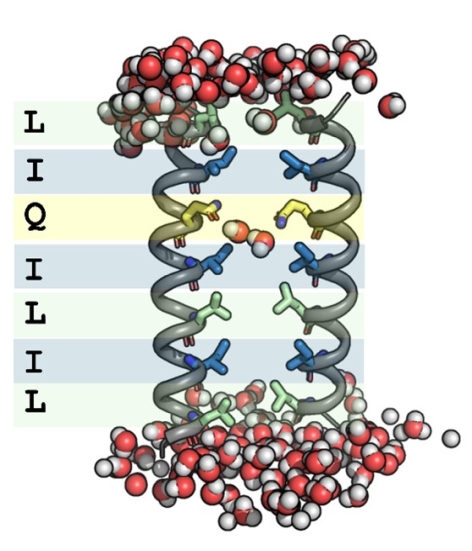A highly collaborative project from the William DeGrado laboratory of the University of California, San Francisco, and Gregory Voth laboratory of the University of Chicago unveiled the key role of dynamic water structures in the selective transport of protons. Many high-resolution structures of proton channels reveal proton conduction pathways that are often interrupted by hydrophobic regions that are completely devoid of water. Despite the hydrophobic barriers, the proton can create its own hydrogen-bonded water networks to facilitate its transit across the channel. Using the structures of novel, designed proton channels as starting points for multiscale reactive molecular dynamics simulations, the researchers uncovered the dynamic trajectories of water and protons through hydrophobic regions during translocation. This study highlights the importance of these proton-mediated transient water wires in the selectivity and conductivity of proton channels.
 |
Figure: Molecular dynamics simulations of designed proton channel show dynamic water structures that enable proton conduction. |
Citation: Kratochvil, HT, Watkins, LC, Mravic, M, Thomaston, JL, Nicoludis, JM, Somberg, NH, Liu, L, Hong, M, Voth, GA, DeGrado, WF, Transient water wires mediate selective proton transport in designed channel proteins, Nat. Chem. 15, 1012-1021 (2023). DOI: 10.1038/s41557-023-01210-4